Key Takeaways
- Innovation in the curricula, including experimentation with technologies and learning spaces, is most likely to be effective when driven by faculty and student needs and served by integrated support structures.
- Surveys of IU faculty and graduate students have identified spaces for scholarly community as a critical need.
- Collaboration across university services (technology, undergraduate education, libraries) delivers a more cohesive and comprehensive experience.
- The IU Bloomington Center for Innovative Teaching and Learning provides a mix of consultation and workshop spaces, instructional technology facilities, and relaxed forums for exchanging ideas.
Rethinking the Traditional Teaching Center
Learning in the information age requires that we think differently about how we engage students in meaningful learning. Efforts to support transformative teaching, including experimentation with technologies and learning spaces, are most likely to be effective when driven by faculty and student needs and interests. This requires rethinking how courses are taught, how technology can enhance teaching and learning processes, how students learn to evaluate and use information, and how classroom and learning space designs can support these new teaching practices.
As Connie M. Schroeder notes, teaching and learning centers "are [primarily] technique-based workshop engines,"1 with variable impact on an institution's faculty and its mission. In the context of broad institutional and technological change — and of demands for student engagement and evidence of learning deriving from that engagement — the collaboration behind CITL expresses IU's commitment to a strategic position on transformative teaching.
A shared approach and strong partnerships led to a new vision for a teaching center, embodied in the Center for Innovative Teaching and Learning (CITL). CITL brings together expertise in the areas of curriculum design and development, instructional technologies, evaluation and assessment, writing across the curriculum, and service learning, supporting faculty efforts to innovate in the curricula, implement powerful pedagogies in the classroom, and emphasize student engagement.
CITL integrates previously dispersed resources and results from a partnership between the IU Bloomington Office of the Vice Provost for Undergraduate Education and University Information Technology Services to fully support teaching and learning at IU Bloomington. The center, formed in 2010, brings together the staff and resources of Campus Instructional Consulting, the Teaching and Learning Technologies Centers, the Campus Writing Program, and the Service Learning Program. In addition, CITL is co-located with the IU Library's Teaching and Learning Department in order to foster increased collaboration. (These units have also changed over time — see the timeline for a fuller depiction of this evolution.)
While collaboration has always been possible, the formal merging of units and the shared responsibility for resources make it possible to strategically review needs, and to reallocate positions. Some areas, which previously had lesser administrative support, are benefiting from additional resources in this area – and all professional staff are benefiting from the expertise of colleagues. Co-location has also created operational efficiencies and a synergy that is lacking when everyone is dispersed, enriching the knowledge bases of all areas and presenting more opportunities for shared approaches. New positions complement this expertise, and enable the center to grow in high-priority specializations.
Though less formal, CITL's partnership with the IU Libraries is equally important. In Coming in from the Margins, Devorah Lieberman suggests that to best position faculty as change agents in learning organizations, the teaching center needs to be close to the heart of campus and to "communicate stature within the institution." Lieberman identifies the library as an ideal location because it is "understood as a primary focal point of scholarship."2 After inspections of a range of sites at IU Bloomington, the Herman B Wells Library indeed emerged as the best location for a common space to house CITL and foster collaboration.
"CITL's new, strategically planned space reflects its centrality to the mission of Indiana University. By providing instructors with innovative tools for helping students achieve learning outcomes, CITL upholds the university's core objective of disseminating knowledge. The Wells Library location not only offers new meeting spaces, visualization tools, and teleconferencing technology, but also immediate access to all the outstanding teaching and learning resources of the IU Libraries."
—Lauren Robel, IU Provost and Executive Vice President
Designing a Vibrant Space for Faculty and Students
The new multipurpose space was designed to blend support for both students and faculty, distinguishing it from teaching center facilities that traditionally exclude student use. CITL provides a mix of consultation and workshop spaces (figure 1), instructional technology facilities, and relaxed forums for exchanging ideas. It also offers all-hours public areas for students and faculty.

Figure 1. Faculty collaboration in CITL open space
For Wells Library, CITL represents a new environment for exploration and experimentation, one that welcomes and connects faculty and students with their scholarly community and resources. This transformation is possible due to years of investment in digital library resources and infrastructure (paired with a campus investment in high-density storage). Subsequently, the library is creating more community spaces and developing services that support new forms of scholarship and pedagogy. For example, the Grad Commons, a Wells Library community space exclusively for graduate students, will open in June 2013. Students and teaching faculty want access to inspiring spaces, information in a wide range of formats, and expert help — and libraries can offer this neutral academic space.3
"The new CITL space over at the Wells Library is a tangible expression of the campus's commitment to high-quality instructional support. I've organized several workshops with CITL for the instructors of a multi-section undergraduate course – earlier, we held them in whatever classrooms we could reserve, which were sometimes quite cramped and made breakouts and creative approaches difficult," said Beth Cate, associate professor, IU School of Public and Environmental Affairs. "I greatly appreciate that we now have facilities available that offer room, flexibility, and technology to support wide-ranging activities and collaborations that help us further develop our skills as teachers. Plus, the space is cheerful, comfortable, and located in a well-known, [easily accessed] building. I'm looking forward to continued workshops and activities in this space!"
CITL consultants view their clients in unified ways, seeing connections between various teaching efforts and finding common solutions to instructional challenges. They meet regularly to go over projects – and the space encourages impromptu gatherings whenever a need arises. To facilitate these interactions, CITL provides a dynamic environment that includes three key features:
- An open office floor plan to encourage collaboration across all units within CITL
- A collaborative consulting area with soft seating, worktables, and technology stations for collaboration in a comfortable setting (figure 2)
- Perimeter conference rooms for private consultations and quiet work
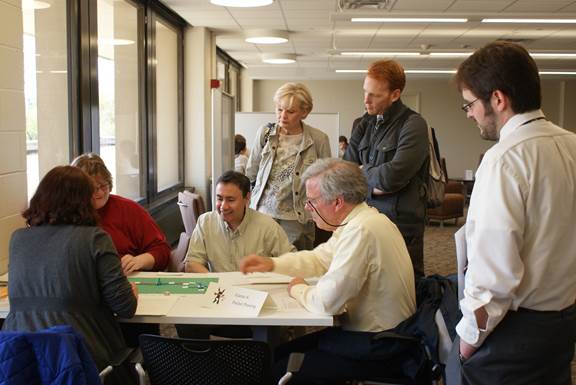
Figure 2. Faculty collaboration in the consulting area
Furthermore, CITL supports a range of IT-fueled collaborative activities by way of:
- Seven collaborative technology stations (which connect multiple laptops, tablets, and other devices) in the open consulting area
- Three collaborative computer stations in the perimeter conference rooms
- A 30-person workshop space with reconfigurable tables, full-wall whiteboards, projection, videoconferencing, and interactive technologies (figure 3)
- A Cisco TelePresence room for immersive videoconferences (figure 4)
- A consultation room for video/sound recording and multimedia production
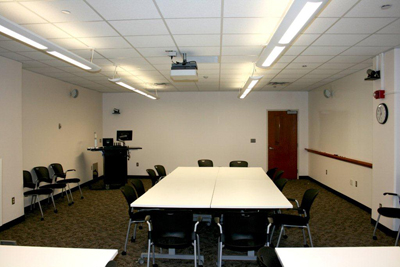
Figure 3. Workshop space
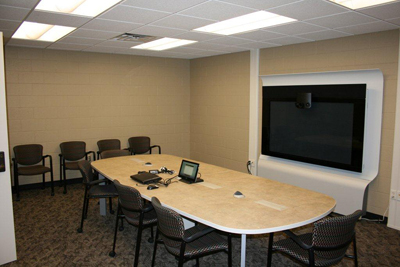
Figure 4. Videoconference room
This CITL video explains building collaborative teaching environments (5:13 minutes).
Partnerships for Progress
IU provides integrated services in CITL through partnerships: Academic affairs and the central IT organization contribute resources under one roof and through cross-functional teams. This has led to an increase in other partnerships – such as awards related to pedagogy and technology, and faculty learning communities that support student learning more directly (e.g., informal learning spaces). Ultimately, rich technology and shared space enhance shared staff resources. Because the new space includes collaborative technology stations for students and faculty, new resources are constantly added to support collaboration. In addition, the high-end Cisco Telepresence room adds a new videoconference resource to support the instructional and administrative needs of faculty, staff, and students.
Locating services in the library highlights the connection between teaching and research, and places the scholarship of teaching and learning — and inquiry-based pedagogy and classroom practice — center stage. A one-stop shop in a faculty-centered location facilitates not only consultation but also conversation, providing a hub for innovation and creativity. For example, the open space at the front of CITL provides an ideal area for faculty learning communities (figure 5) to explore new approaches to teaching and learning in an informal, technology-rich environment. Similarly, co-located staff means CITL, IU Libraries, and faculty are in a better position to collaborate on grant opportunities related to preparing future faculty to assess student learning.

Figure 5. Faculty learning community meeting
Another key motivator is Empowering People, IU's strategic plan for IT, which calls for providing faculty with "support and incentives to produce innovative digital instructional materials, resources, simulations, and games" – ultimately urging the development of systematic processes for "identifying ideas, designing experimental applications, disseminating results, and implementing new IT solutions to support instruction." CITL's comprehensive services foster stronger connections to IU IT resources such as training, classroom technology support, videoconferencing, and media production.
The enhanced profile that CITL has gained from reorganizations and repositioning has led to increasing awareness and use of services, as well as opportunities for the center to be involved in the development of curricular initiatives and capital projects related to teaching and learning. This, in turn, brings sustained attention and evolution to interconnected opportunities on a campus such as IU Bloomington. For example, CITL now works closely with the classroom technology unit to provide pedagogical and technical assistance to faculty teaching in new classrooms. CITL also plays a critical role in working with faculty to define new classroom requirements that extend the boundaries of teaching and learning through videoconferencing. Moreover, enhanced support for online teaching is possible through closer collaboration between CITL and media production services.
Librarians also play an important role in teaching and learning innovation. As technology and the information landscape have changed, librarians have evolved from guest lecturers to strategic teaching and learning partners. They consult on assignment design, participate in reviewing and assessing coursework, and instruct students in online or face-to-face environments. Librarians in the Teaching and Learning Department, in particular, have broad understandings of pedagogical trends and practices, including learning outcomes assessment, student-centered learning environments, and problem-based learning models. Ultimately, it is through this direct involvement in course design and delivery that librarians have the greatest impact on student learning. For example, with support from the College of Arts and Sciences and the Vice Provost for Undergraduate Education, the Libraries are offering curricular innovation grants for faculty looking to improve information fluency.
Keeping Pace with Rapidly Changing Needs
By bringing together IU's instructional consultants, CITL seamlessly integrates IT into pedagogical discussions. IT-side consultants continue to develop their pedagogical savvy and can address underlying instructional goals with clients (which helps them offer better solutions), and academic-side consultants (including library staff) become better versed in technologies that can meet client needs. This integration increases collaboration, reduces duplication, and leverages expertise. All told, the extended CITL team includes:
- 18 instructional consultants (including curricular, writing, technology, and service learning specialists)
- 4 library teaching and learning specialists
- 7 support staff and hourly employees
The instructional consultants and library teaching and learning specialists consult with faculty both in teams and individually, depending on the faculty member's needs. Having the staff together enables them to quickly and easily invite their colleagues into a faculty consultation, as the need arises. For example, an instructional consultant may invite a writing program colleague to join a faculty consultation if the faculty member expresses interest in the use of reflective writing as an instructional strategy. In the past, the instructional consultant would have made a referral to writing program staff in a separate unit, housed in another building on campus. The inconvenience and additional time required to seek help was often a barrier for faculty. Now, staff can quickly organize into teams to respond to complex teaching opportunities and help develop faculty learning communities.
CITL's guiding principles reflect these early outcomes and hopes for the future:
- Community: Build communities of practice among the faculty to foster collaboration and sense of shared goals.
CITL has hosted 11 Faculty Learning Communities on topics ranging from intrinsic motivation and play to innovation in large courses.
- Leadership: Provide leadership in developing new instructional and curricular approaches, but also seek to foster such leadership within faculty colleagues.
CITL's long-term programs include the Course Design Institute, the Institute for Developing Online Courses, and the Educational Gaming Sequence.
- Advocacy: Advocate for the importance of teaching and learning at IU Bloomington as a vital task of the university worth the highest levels of attention, recognition, and funding.
CITL helps initiate positive change via classroom design (see next section).
- Partnerships: Build partnerships with individuals and academic units to encourage collaboration and better leverage resources to impact teaching and learning at IU Bloomington.
The Biology Department, IU Libraries' Teaching and Learning Department, and CITL are collaborating on the grant-funded Science Education Assessment Scholars Program.
- Innovation: Promote innovation as a process of continual exploration, inquiry, and sharing — a process that is vital to instructors of all experience levels.
Annual CITL events include the Preparing Future Faculty conference, the Campus Climate Workshop for new associate instructors, and the new faculty teaching orientation.
For the IU Libraries, the benefits over time will include deeper integration of librarians and information literacy into curricular planning and instruction, as well as closer connections with faculty and scholars whose teaching and research will help ensure the relevance and use of library collections and services.
Advocating for and Initiating Change
The innovative workspace design for CITL, where collaboration is normal and technology is ubiquitous, reflects students' preferred learning conditions and creates expectations of what the learning environment should be. Innovative classroom space is purposefully connected to CITL through engagement with innovative pedagogies and technologies. At the same time, CITL is positioned as a partner in advocating for change in the way classrooms are developed and planned on the campus, ensuring that innovation remains a focus in room design, technology infrastructure, and furnishings. For example, two rooms returned to the campus classroom inventory when CITL staff moved out of their former locations. This provided a rare opportunity to transform these spaces (figures 6 and 7) into classrooms that encourage collaborative learning. CITL has played an important role in advocating for more collaborative classrooms, and has provided ongoing support for Node classrooms.
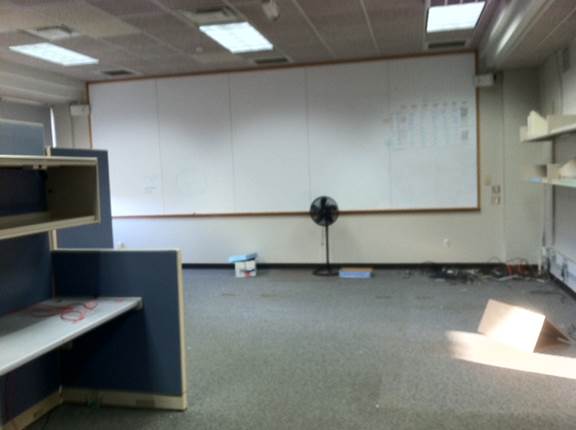
Figure 6. Ballantine Hall classroom before redesign
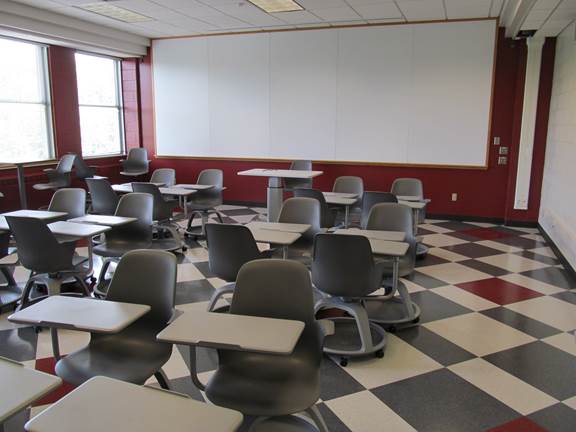
Figure 7. Ballantine Hall classroom after redesign
New classrooms are designed to foster active learning, and to challenge faculty to reflect on effective pedagogies and to integrate relevant technology. The center supports faculty use of innovative classroom spaces, reviews requests for "fit," and supports research into the effectiveness of the spaces. This advocacy for new and innovative learning spaces provides opportunities for outreach to new audiences, as well as embedding institutional priorities in the faculty research agenda and linking different groups interested in the scholarship of teaching and learning. All told, new experimental spaces represent significant opportunities for faculty to engage in pedagogies focused on collaborative, active learning and to envision versatile formal and informal learning environments in the residence halls. In particular, CITL has contributed to the ongoing research efforts in the Collaboration Café classroom.5
Creating opportunities for faculty to assess student learning, supported by central resources, is critical to the success of campus teaching and learning endeavors and to the CITL mission. Change initiatives must acknowledge autonomy even as they leverage collective understanding and promote IT opportunities. As Schroeder points out, the best way to coordinate change initiatives is through broad-spectrum organizational development, and especially through demonstrated partnership, leadership, and collaboration.4 For CITL, this translates to a collaborative effort to both seek and provide new perspectives on educational and administrative opportunities — in other words, to foster a flexible environment that encourages innovation, risk-taking, and ownership.
This network of relationships increases visibility of the center and of campus-wide initiatives related to teaching and learning to the whole faculty, ensuring that change is evident and explicit in everything done and said within and about CITL. Moreover, this network helps increase faculty confidence in CITL services and leads to more connected initiatives, timely training, tailored programs that target specific pedagogical needs in schools and departments, and a mission-driven focus: "Leading through expertise, vision, and institutional alignment."6
Expanding the Model
Surveys of IU faculty and graduate students have identified a critical need for scholarly community spaces. The academic landscape is constantly changing, and CITL will soon become part of a larger Scholars' Commons in Wells Library. (Construction of the 10,000 square foot space – which, along with CITL, provides a suite of technologies and services to support research and scholarly communities -- begins in fall 2013.) By assembling groups and expertise distributed across campus, as CITL does, the Scholars' Commons will blend technology with traditional resources to serve as a dynamic, collaborative environment for intellectual discovery and for exploring new and emerging forms of scholarship, teaching, and research. The space will remain totally flexible, with open scheduling – and there is great potential for cross-disciplinary engagement and consultation synergies between CITL and the Scholars' Commons.
Locating the Scholars' Commons in close proximity to CITL also facilitates the integration of teaching and research, too often seen as competing responsibilities of faculty. The underlying concepts for both spaces are flexible use, open access, and interactive services — in other words, common (community) spaces where exchange can be more opportunistic and less formal. Thus, CITL will offer expert guidance alongside Scholars' Commons support for statistical analysis and geospatial information systems; data mining; complex research; data management and curation; digital humanities; online publishing; copyright and intellectual property; and information fluency.
Key Recommendations
For others exploring similar initiatives, the following steps may yield successful implementation of the CITL model:
- Ensure the teaching center's mission is embedded in — and empowered to further — the institution's mission and short- and long-term goals.
- Develop strong partnerships between academic affairs, information technology, and university libraries to enable transformative teaching.
- Connect innovation to initiatives in the academic units, so that deans value the academic support provided by the centralized resource, and underpin its success through promotion of that value.
- Build on the strengths of these partnerships to leverage scarce resources.
- Re-envision teaching centers as community spaces that move beyond conceptual discussions to provide common solutions to instructional challenges — and to drive student engagement.
- Promote holistic approaches to both teaching and faculty development, encouraging idea sharing, reflection, and partnership across disciplines.
In this time of rapid change in higher education, we can no longer rely on unit and staff silos. The model described in this article situates the teaching center as the cornerstone of innovation in teaching and learning. From exploring the effective use of iPads in instructional settings to developing new learning environments that challenge traditional views of a classroom, we believe that teaching centers must continue to evolve to encourage and support transformative teaching. Providing comprehensive, integrated services that draw on strong partnerships — and are directly linked to campus and university priorities — is critical to our success.
We expect the CITL model to expand successfully into the Scholars' Commons, meeting faculty and graduate student collaboration and resource needs, as well as the university's larger goal to integrate teaching and research. We are already observing increased recognition from academic deans, which translates into increased demand for service – and, in turn, greater innovation among faculty who have not previously been users of such curricular or technological support. The space, like those services, invites collaboration and inquiry-based teaching, and it promotes the value of the teaching mission at the very heart of our research university.
- Connie M. Schroeder, Coming in from the Margins: Faculty Development's Emerging Organizational Development Role in Institutional Change, ix. (Sterling, VA: Stylus Publishing, 2010).
- Devorah Lieberman, "Collaboration and Leadership Between Upper-Level Administrators and Faculty Developers," in Coming In from the Margins: Faculty Development's Emerging Organizational Development Role in Institutional Change (Sterling, VA: Stylus Publishing, 2010), pp. 70–71.
- Barbara I. Dewey, "Social, Intellectual, and Cultural Spaces: Creating Compelling Library Environments for the Digital Age," Journal of Library Administration, vol. 48, no. 1 (2008), pp. 85–89.
- Schroeder, Coming In from the Margins, p. 2.
- Anastasia Morrone, Judith Ouimet, and Gregory Siering, "Classroom or coffeehouse? Perceptions from faculty and students on a new style of an active learning classroom," accepted for publication in New Directions for Teaching and Learning: Active Learning Spaces.
- Schroeder, Coming In from the Margins, p. 147.
Recommended Reading
Robert Bruininks, "Transforming America's Universities to Compete in the 'New Normal,'"Innovative Higher Education,vol. 35, no. 2 (2010), pp. 113–125.
Kwok-Wing Lai, "Digital Technology and the Culture of Teaching and Learning in Higher Education,"Australasian Journal of Educational Technology,vol. 27, no. 8 (2011), 1263-1275.
Sarah Lohnes Watulak, "'I'm Not a Computer Person': Negotiating Participation in Academic Discourses,"British Journal of Educational Technology,vol. 43, no. 1 (2012), pp. 109–118.
Stephen Marshall, "Change, Technology and Higher Education: Are Universities Capable of Organizational Change?" Journal of Asynchronous Learning Networks,vol. 15, no. 4 (2011), pp. 22–34.
Aaron Pallas, "Assessing the Future of Higher Education,"Society,vol. 48, no. 3 (2011), p. 213.
Josipa Roksa, "The State of Undergraduate Learning,"Change,vol. 43, no. 2 (2011), p. 35.
© 2013 Anastasia Morrone, Sonya Stephens, Carolyn Walters, Diane Dallis, and Sarah Engel. The text of this EDUCAUSE Review Online article is licensed under the Creative Commons Attribution 3.0 license.
